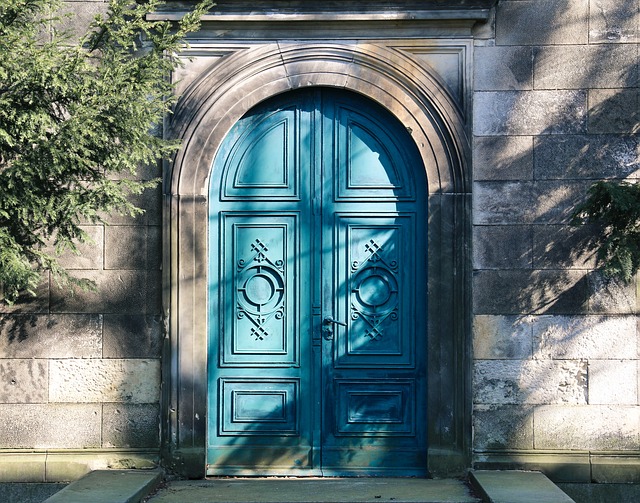
The world of architecture is a harmonious blend of artistry and functionality, where creative expression meets practical necessity. Amid the many facets of this discipline, one often overlooks some critical aspects of façade development. The façade, the exterior face of a building that greets the street or open space, plays a pivotal role in defining a structure’s visual and functional identity. It’s not just a surface embellishment; it profoundly influences a building’s energy efficiency, illumination, and ventilation.
Façade development, within the realm of architecture, encompasses the evolution, design, and construction of building façades. It’s not limited to mere surface adornments; it encompasses technological progress, material evolution, and changing cultural aesthetics. As we delve deeper into the essence of façade development, we discover that it mirrors the journey of human civilization as much as it charts the course of architectural styles.
The captivating journey of façade development reflects numerous cultural, technological, and artistic shifts throughout history. From the grandeur of ancient Egypt to the minimalist elegance of contemporary designs, each era has made unique contributions to the evolution of façade styles and techniques. This article seeks to offer a comprehensive exploration of this journey, delving into the enthralling history and the potential future of façade development.
Early Architectural Styles and Façade Development
The history of façade development dates back to the dawn of human civilization. Early humans, in their quest for shelter, devised rudimentary façades. These early façades were simple yet functional, designed to shield against the elements and potential threats.
As civilizations advanced, so did their architectural prowess. For instance, the ancient Egyptians constructed monumental stone structures with ornate façades. Their pyramids, temples, and palaces featured symmetrical and proportionate façades adorned with intricate carvings and hieroglyphs. These awe-inspiring structures reflected the socio-political power of the Pharaohs and their religious beliefs.
The Greeks and Romans, too, left an indelible mark on façade development. The Greek Parthenon, with its iconic Doric columns, and the Roman Colosseum, with its tiered arches, exemplify their respective façade styles. These façades, while visually pleasing, also served functional roles by providing structural support and facilitating light and air circulation.
A Closer Look at Façade History
The Middle Ages witnessed a shift from classical simplicity to more intricate and symbolic façades. The Gothic style, characterised by pointed arches, ribbed vaults, and flying buttresses, gave rise to some of Europe’s most magnificent cathedrals. These façades were embellished with statues, stained glass, and elaborate carvings, serving as visual narratives of religious stories and concepts.
The Renaissance era rekindled interest in classical Greek and Roman architecture. This influence was evident in façades characterised by symmetry and proportion, featuring columns, pediments, and friezes. The Baroque and Rococo styles that followed, in stark contrast, boasted extravagant and ornate façades, reflecting the opulence and influence of the Church and the aristocracy.
The Industrial Revolution ushered in a new era, introducing materials like steel and reinforced concrete, which revolutionised façade development. The Modernist movement embraced these materials, promoting sleek, minimalist façades with a “form follows function” philosophy. The subsequent Post-modern era challenged the rigid tenets of Modernism, resulting in eclectic façades that amalgamated elements from different styles and epochs.
Evolution of Façade Styles across History
The evolution of façade styles across history underscores the ever-evolving human creativity, technology, and societal values. The 20th century, in particular, witnessed rapid developments in façade styles, owing to technological advancements and the emergence of new architectural movements.
The International Style, prevalent in the mid-20th century, emphasised functionality, simplicity, and the use of modern materials. Its façades eschewed ornamentation, focusing instead on geometric forms and expansive glass surfaces. The Brutalist style, in contrast, featured raw, unadorned concrete façades, reacting against the perceived excesses of prior styles.
The late 20th century and the early 21st century ushered in further experimentation in façade development. The Deconstructivist movement questioned conventional architectural norms, yielding façades characterised by fragmentation, distortion, and apparent chaos. Contemporary sustainable architecture prioritises eco-friendly materials and technologies, yielding façades that are not only aesthetically pleasing but also energy-efficient and environmentally responsible.
Conclusion: The Future of Façade Development
As we look ahead into the future of façade development, we glimpse a realm of boundless possibilities. The advent of innovative materials and technologies, such as smart glass, photovoltaic panels, and 3D printing, promises to revolutionise façade design and construction. Sustainability takes centre stage, with façades playing a pivotal role in reducing energy consumption and promoting natural ventilation and illumination.
Façade engineering will play a vital role in realizing the full potential of these innovative materials and technologies, enabling the creation of façades that are both sustainable and aesthetically stunning. The future of façade development holds exciting prospects in terms of aesthetic expression. As architects and designers continually push the boundaries of creativity, we can anticipate façades that are not merely functional and sustainable but also artistically captivating and culturally resonant.
The journey of façade development is an ongoing saga. As we navigate this enthralling terrain of architectural evolution, we look forward to a future where façades are more than just a building’s face; they are a reflection of our collective human endeavour, showcasing progress, innovation, and the enduring spirit of design.

